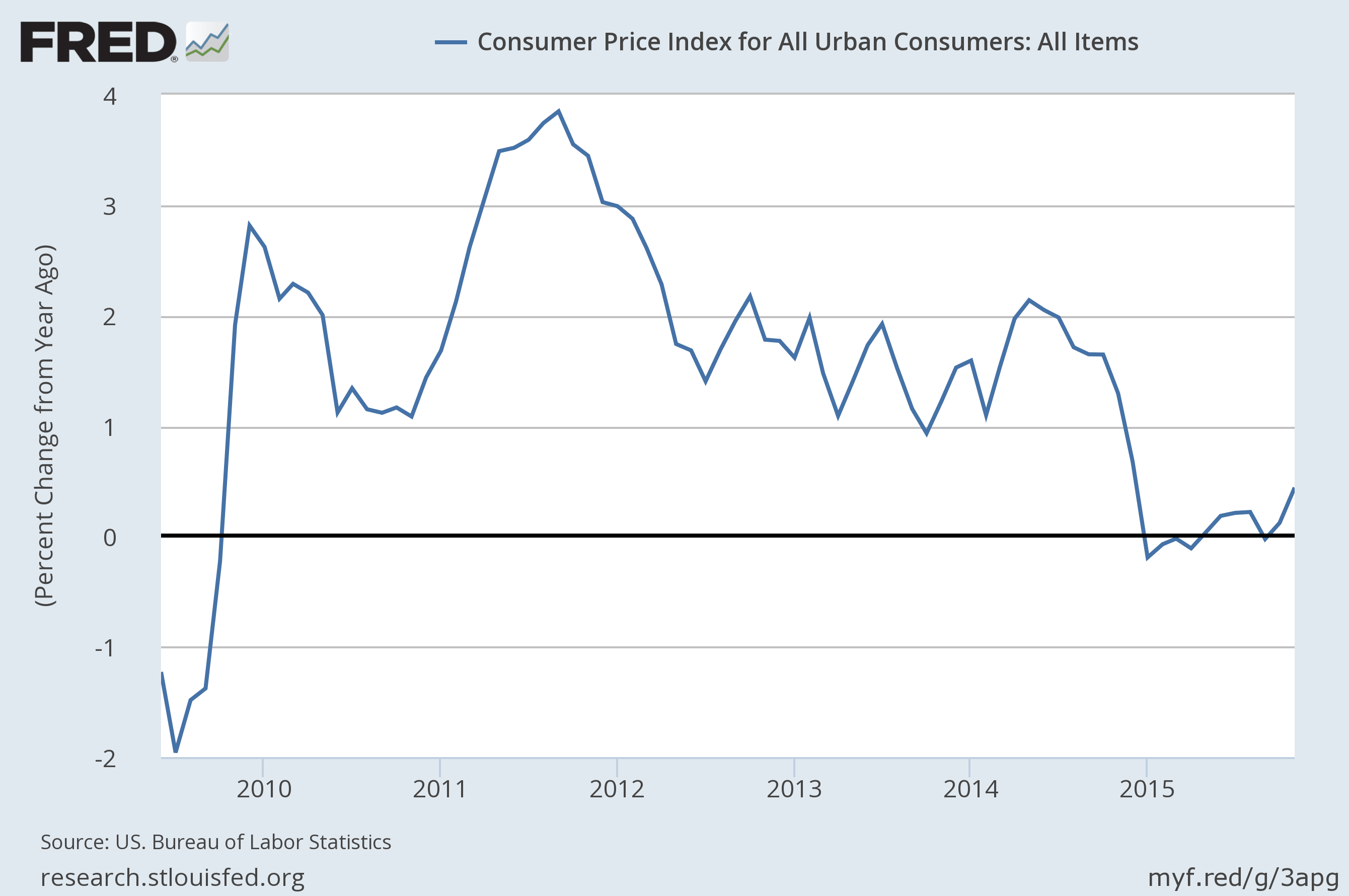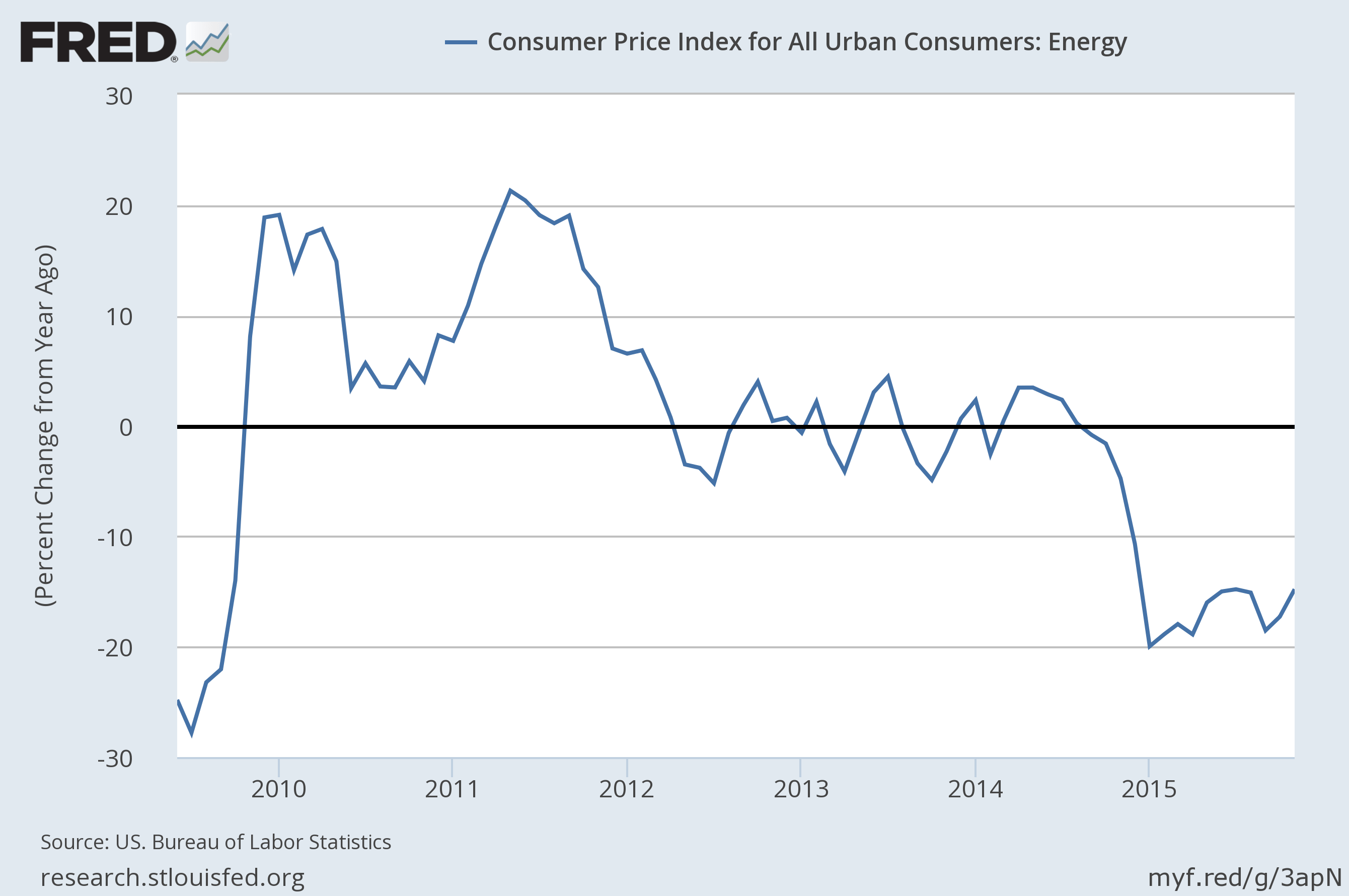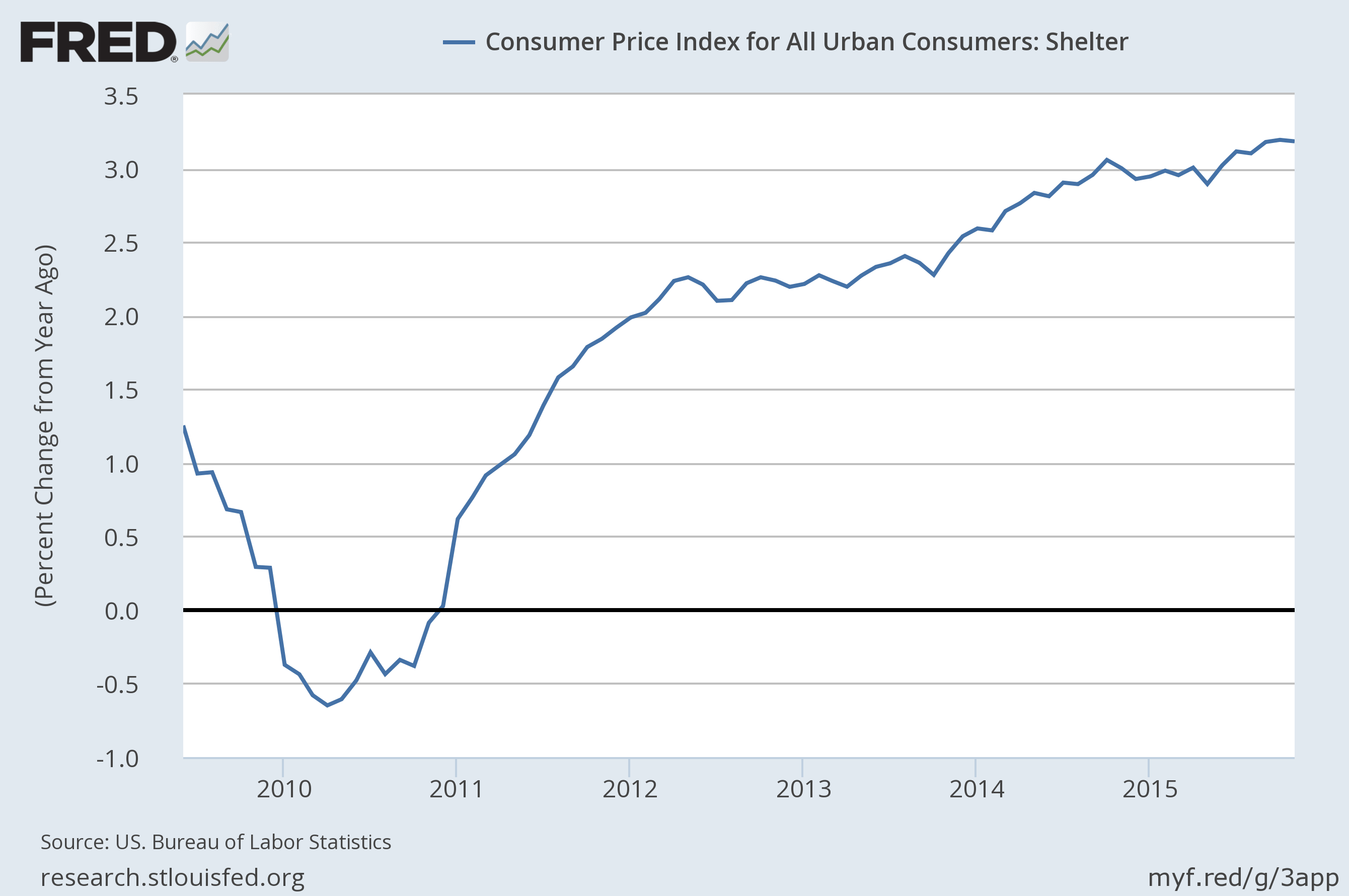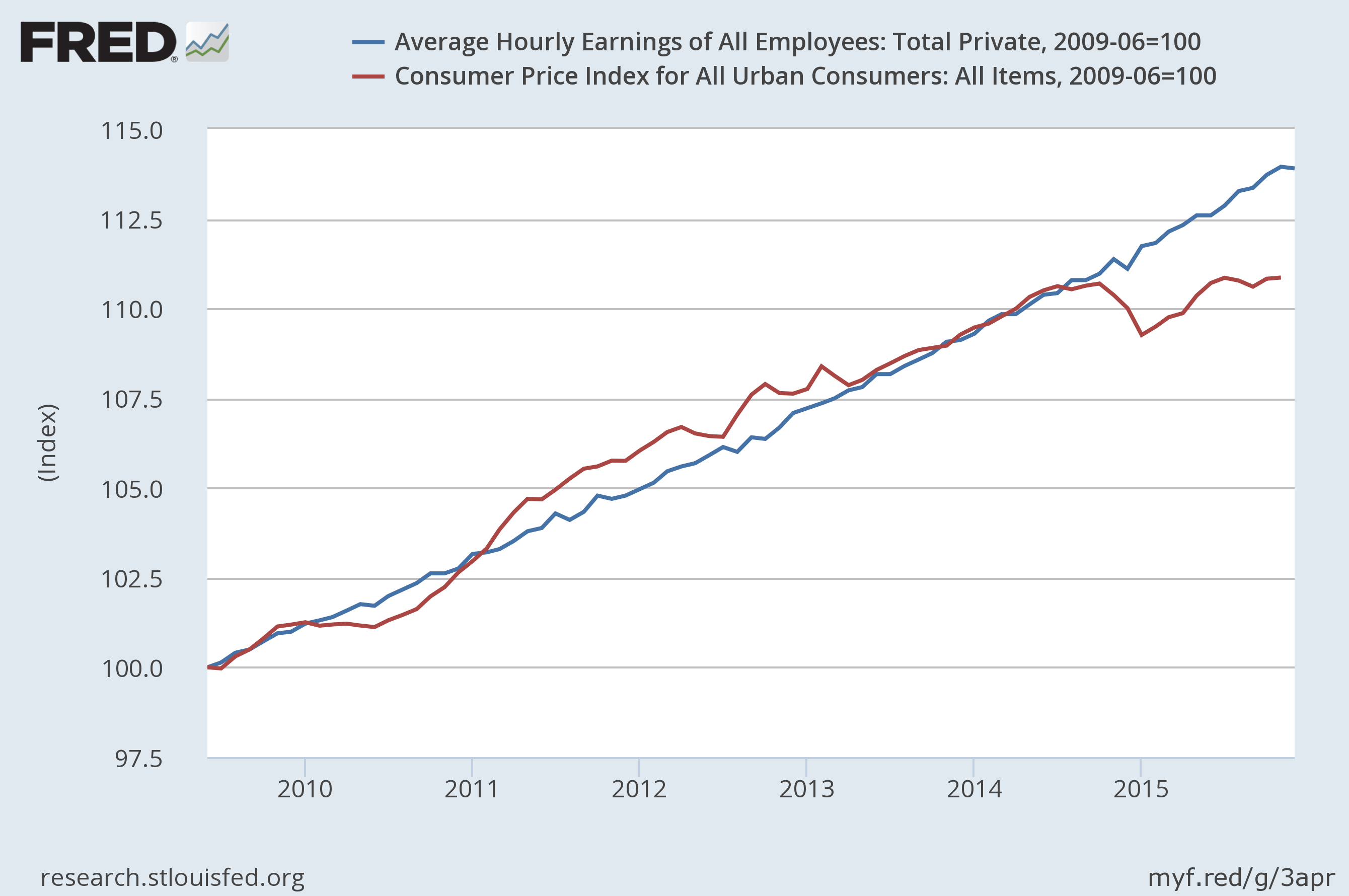Low inflation means real income growth
Posted Tuesday, January 19 2016
The Wall Street Journal highlights the low inflation environment we're currently experiencing is actually the product of two fairly strong trends nearly canceling each other out. Below is the chart of headline inflation as measured by the Consumer Price Index. Over the past year headline inflation by this measure has risen by about 0.5%.

But this tame measure hides the fact that we've had a something approaching a price shock in oil. The energy component of the CPI (shown below) started 2015 down 20% Y/Y and was still down 15% Y/Y in November of 2015.

Compensating for this strong decline in inflation pressure is consistently rising shelter (predominantely rent) costs. Shelter is a larger component of the overall CPI than energy so its more modest 3% Y/Y increase (shown below) can substantially offset the 15% Y/Y drop in energy prices.

What do you do with these strong opposing signals? The Fed has correctly stated that even stabilizing oil prices will raise headline inflation and have at least in part moved to raise interest rates with that expectation. But let's not forget that, all else being equal, a low inflation environment yields rising real income. The chart below shows headline CPI since the end of the recession along with nominal average hourly earnings for all private employees.

For now, and for the first time in any meaningful way since the recession, we're seeing wage growth in excess of inflation. This is part of the way real median household income regains ground lost over the last decade. Yes, rising rents are worrisome if the trend persists and I'd love to see monetary policy "normalize" sooner rather than later, but will we sacrifice real wage growth for normalization?

